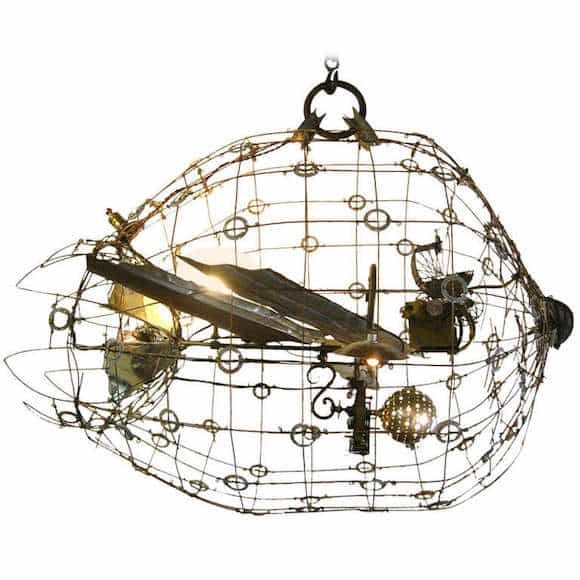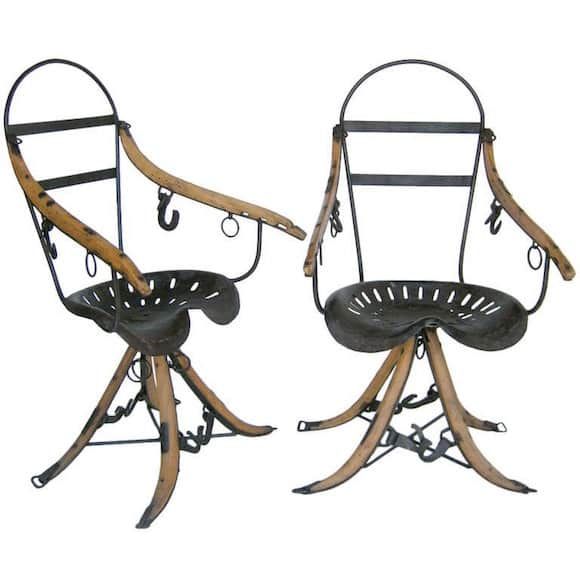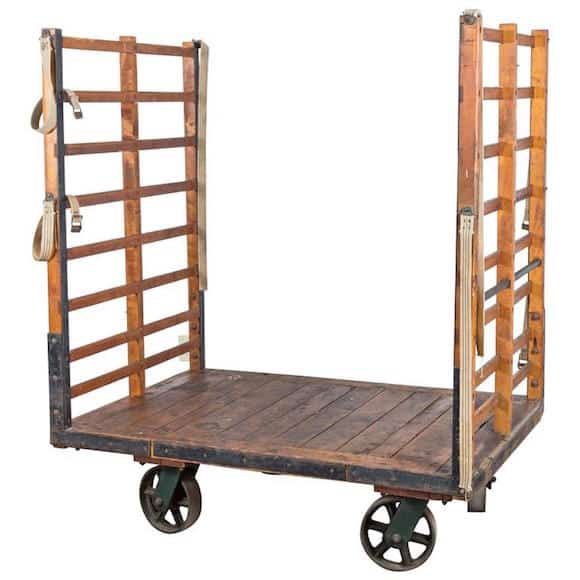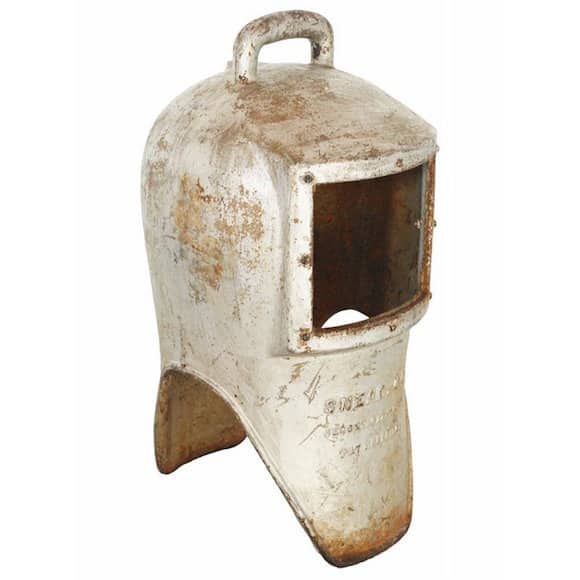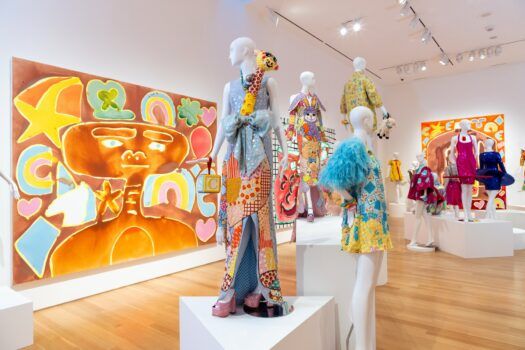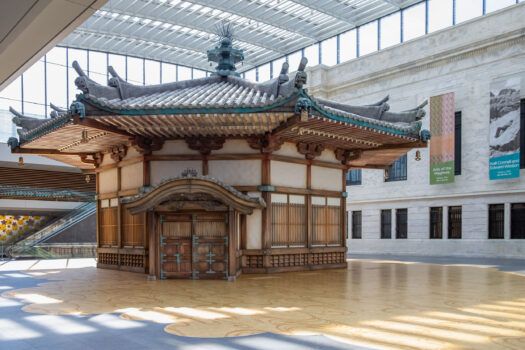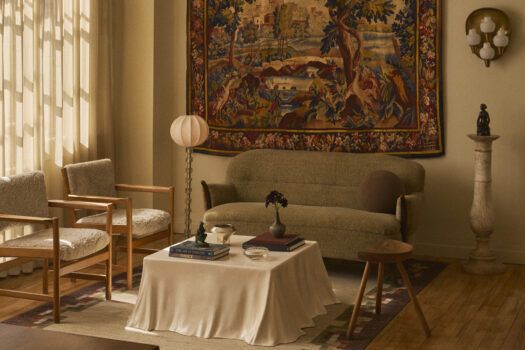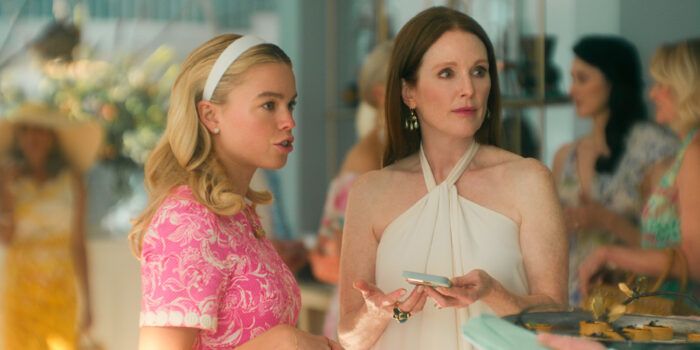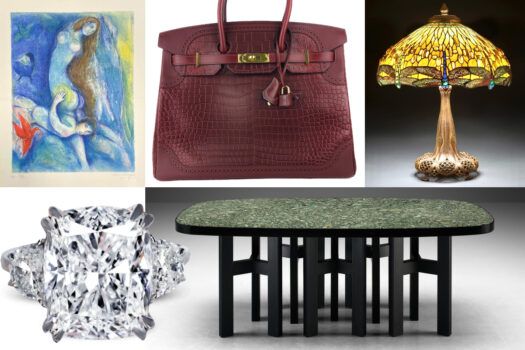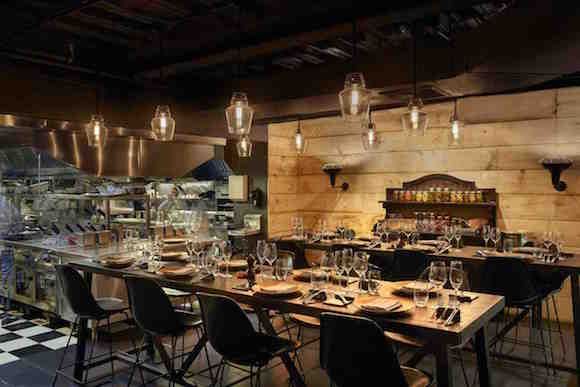
Mark Zeff combines industrial and farmhouse components in his Black Barn Restaurant in New York. The factory-style light fixtures and Edison bulbs lend the space a steampunk glow. Photo by Michael Mundy
As a design concept, steampunk can feel elusive. Unlike movements such as Arts and Crafts or American Craftsman, which are rooted in specific historical periods, steampunk combines an imagined past with the present and sometimes even the future.
In the late 1980s, writer K. W. Jeter coined the term steampunk to describe his science-fiction stories, which were set in an idealized version of Victorian London. Since that time, steampunk has evolved, emerging as a design style and a subculture. Steampunk places emphasis on the bespoke, the recycled and the handmade, as well as high-quality materials and craftsmanship. Steampunk fans also share an interest in the industrial and in machines, especially steam-powered ones.
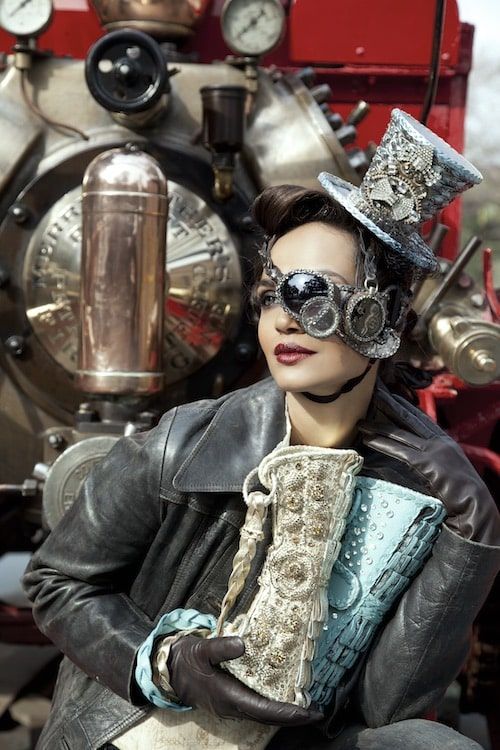
Ali Fateh, an accessories designer based in Pakistan, hired Aamina Sheikh, a star of stage and screen, to display handbags from his Steampunk Elegance collection. Photo, makeup and styling by Maram & Aabroo
In the realm of fashion, a steampunk look is typically built on a Victorian (or an Edwardian) silhouette, which means that women tend to wear corsets, but unlike their historical predecessors, they wear them over their frocks. Because of the centrality of Victorian design, also marked by distinctive jewelry such as cameos and clock lockets, steampunk can be considered a neo-Victorian movement. In other words, steampunk combines the Victorian with the new.
Since the mid-1990s, steampunk-styled settings and interiors have become popular is mainstream films such as Sherlock Holmes (2009) with Robert Downey Jr.; Van Helsing (2004), which starred Hugh Jackman; or the Will Smith vehicle Wild Wild West (1999). These movies present a contemporary version of the Victorian past. Steampunk elements, such as dark walls, industrial lighting, brass fittings and Edison bulbs, have also been featured in the designs of numerous restaurants.
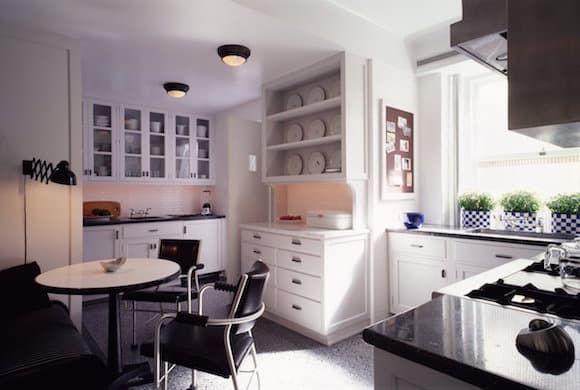
Stephen Shadley’s design for this kitchen on New York’s Central Park West is largely constructed of whitewashed Art Deco elements. Still, the sturdy industrial chairs and retractable workshop lamp evokes the neo-Victorian futurism of steampunk. Photo by David Glomb
When talking of steampunk, design professionals often emphasize the style’s industrial elements. Interior designer Stephen Shadley particularly likes steampunk’s inclusion of factory-style light fixtures. “The elegant simplicity those fixtures, a white or clear glass shade on a brass base, the bakelite switch. They’re beautiful and functional,” he says. “Here, form follows function almost completely.”
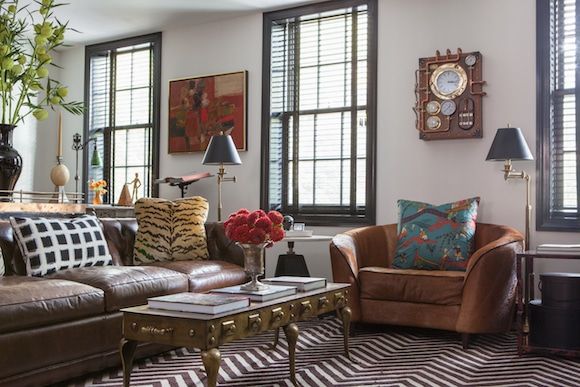
The owners of this Brooklyn Heights townhouse asked for a steampunk decor, but designer Nick Olsen took a more nuanced approach, mixing Victorian, Moroccan and other styles. Steampunk pieces here include a brass footman’s coffee table, ca. 1900, from John J. Gredler Works of Art, and a wall clock with industrial brass and copper fittings. Photo by Reid Rolls for Domaine Home
One of the appeals of steampunk lies in its oppositions: domestic versus industrial, refined and polished versus coarse and gritty, Victorian versus new, fantasy versus reality. Because it is up to the individual designer to develop the right steamy mix, you will find a large range of steampunk looks. You will also find some argument as to whether a look is steampunk or not.
A steampunk interior can appear much like the Victorian drawing room in your imagination — stately, restrained, proper — while at the same time containing contemporary comforts and conveniences. Another steampunk-style room can look more theatrical, much like the lair of a mad scientist. And, of course, objects with high steampunk quotient, such as brass light fixtures or Victorian scientific instruments, can add charm and interest to almost any set up.
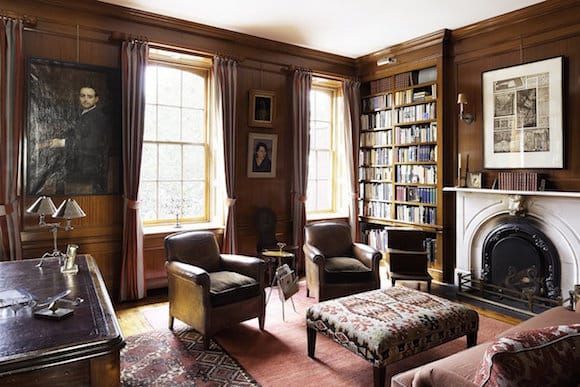
Vintage leather armchairs, a Victorian fireplace mantel and a 19th-century portrait ground this New York townhouse library in the past, while contemporary window treatments and desk accessories keep it looking to the future. Designer Sheila Bridges’s mixture of old and new lends the space a steampunk sensibility. Photo by Dana Meilijson
Steampunk, by combining antique and contemporary and repurposing industrial items, offers a fresh way to enjoy Victorian style. Perhaps this movement, which highlights craftsmanship and the reuse of objects and materials, also encapsulates something else that speaks to the present day — that what we do matters, that sourcing responsibly and buying carefully make a difference and that, ultimately, there is hope for the future.
Katherine Gleason, a longtime admirer of neo-Victorian styles, is the author of Anatomy of Steampunk: The Fashion of Victorian Futurism (Race Point Publishing).
Get the Steampunk Look

